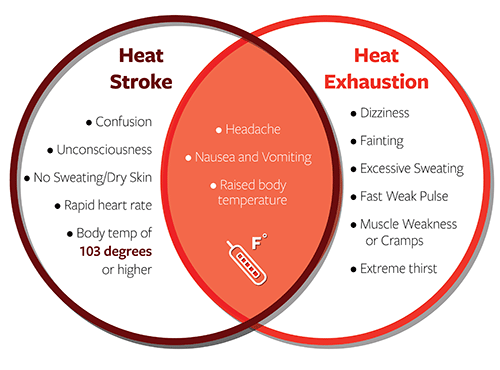As the summer sun intensifies, Texas residents face the challenge of coping with extreme heat. The Lone Star State is notorious for its soaring temperatures, making it crucial to prioritize heat safety during the summer months. Heat-related illnesses such as heat stroke and heat exhaustion are genuine concerns that demand attention.
In this article, we will explore essential tips and reminders to help you stay safe and healthy amidst the blistering Texas heat.
Preventative Measures and General Tips
- Stay Hydrated. When the temperature soars, hydration becomes paramount. Drinking plenty of water is the cornerstone of heat safety. Ensure that you have an ample supply of water wherever you go, especially when engaging in outdoor activities. Sports drinks can also help replenish electrolytes lost through sweating. Avoid excessive alcohol and caffeine intake as they contribute to dehydration.
- Dress Appropriately. Choosing the right clothing can significantly impact your body’s ability to cope with extreme heat. Opt for loose-fitting, lightweight and light-colored clothing that allows air circulation and reflects sunlight. Wearing a wide-brimmed hat and sunglasses provides additional protection for your head and eyes. Don’t forget to apply sunscreen with a high SPF to shield your skin from harmful UV rays.
- Plan Outdoor Activities Wisely. It’s crucial to plan outdoor activities strategically to minimize exposure to the scorching heat. Whenever possible, schedule your outdoor endeavors during the cooler hours of the day, such as early morning or late afternoon. Seek shaded areas and take frequent breaks in cool or air-conditioned spaces. If engaging in vigorous exercise, pace yourself and listen to your body’s signals. Overexertion in extreme heat can lead to heat-related illnesses.
- Create a Cool Environment. Take proactive measures to maintain a cool environment within your living space. Utilize fans or air conditioning to circulate air and regulate temperature. Keep curtains and blinds closed during the day to block out direct sunlight. If your home lacks air conditioning, consider spending time in public spaces that provide cool relief, such as libraries, malls, or community centers.
Understanding and Avoiding Heat-Related Illnesses
Familiarize yourself with the symptoms and signs of heat stroke and heat exhaustion. Heat stroke is a severe condition that requires immediate medical attention and is characterized by a high body temperature, rapid pulse and confusion. Heat exhaustion, on the other hand, is characterized by heavy sweating, weakness, dizziness and nausea. If you or someone else experiences these symptoms, seek medical help promptly.

People with these symptoms should immediately rest in a cool, shaded place and (if conscious) drink plenty of non-alcoholic, non-caffeinated fluids. Apply cool, wet cloths or water mist while fanning the person. Seek immediate medical attention by calling 911 or your local emergency number for symptoms that include cool, moist, pale skin, rapid pulse, elevated or lowered blood pressure, nausea, loss of consciousness, vomiting or a high body temperature.
For late-stage heat stroke symptoms, cool the person further by positioning ice or cold packs on wrists, ankles, groin and neck and in armpits. Administer CPR if the person becomes unconscious.
Protecting More Vulnerable Groups
Extreme heat affects everyone, but certain groups are more vulnerable, including children, older adults and individuals with chronic health conditions. Stay vigilant and keep an eye on those around you. Encourage frequent water breaks and ensure that everyone has access to shaded areas. It’s essential to check on elderly neighbors or relatives who might require assistance during heatwaves.

- Hot Cars: In 2022, eight children in Texas died due to Pediatric Vehicular Heatstroke. As hot as it is outside, it quickly gets even hotter in a parked car, which is why you should never leave children or pets unattended.
- Hot Pavement: On a sunny summer day, the ground can get hotter than the surrounding air — and hot enough to cause skin to burn. Seniors and children are more at risk of experiencing thermal contact burns with hot pavement. Ensure adequate footwear while walking around outside, including by the pool or beach.
Texas summers can be brutal, but by prioritizing heat safety, we can ensure a safe and enjoyable season. By taking necessary precautions and keeping an eye out for heat-related symptoms, we can beat the heat and embrace the best that summer has to offer.
Related Articles from The Scope
COVID-19 Heroes Day: Honoring Sacrifice
Updated Feb. 4, 2025. (Originally published Feb. 2024.) For health…
Winter Weather in Texas: How to Stay Warm and Safe
Inclement winter weather doesn’t happen often in Texas, so when…
10 Tips for Going Back to School Safely
With kids returning to school, here are key public health…
Hospital COO’s Perspective on Emergency Prevention
Pamela Stoyanoff, MBA, CPA and FACHE is currently president and…
Texas Hospitals Going Above and Beyond on Charity, Indigent Care
Everyone needs and deserves medical care. Texas hospitals understand that…
The COVID Compromise: Fighting for Safe Hospitals
To allow Texas hospitals to continue protecting their patients and…







